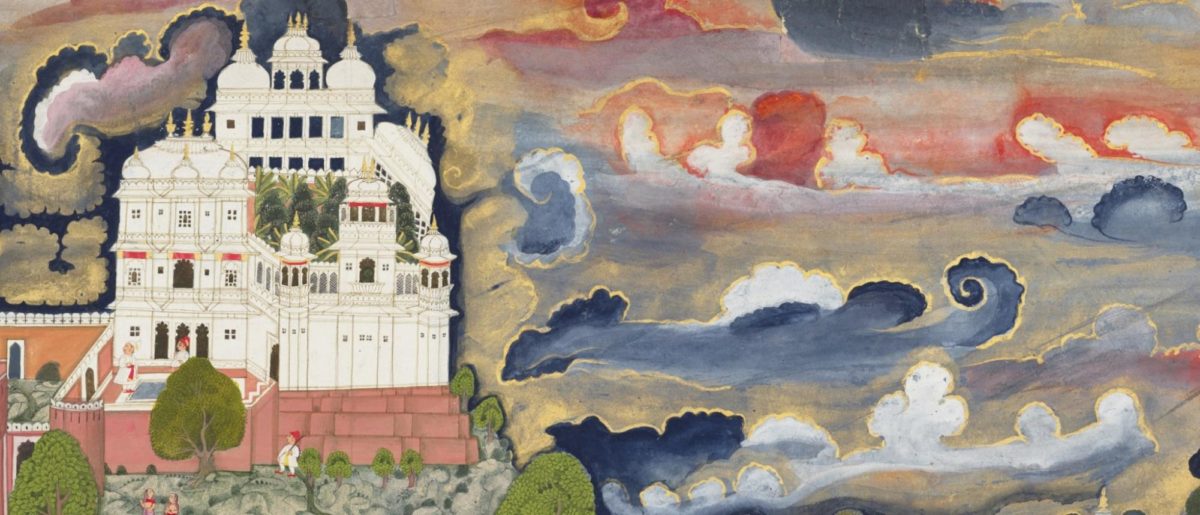A visit to “A Splendid Land: Paintings from Royal Udaipur” is not a passive experience. Although many of the works in the exhibit are older than the United States itself, there is an active stream of life that rushes throughout the display hall, gathering up the sounds, sights, emotions and complex cultural wealth that defined historic Udaipur, the former capital of the Kingdom of Mewar located in Northwestern India.
“A Splendid Land” was curated by The National Museum of Asian Art of the Smithsonian Institute as part of the Museum’s celebratory centennial exhibition lineup. After its debut in the Arthur M. Sackler Gallery, the exhibit traveled to the Cleveland Museum of Art (CMA) where it was on display throughout the summer of 2023. The artworks, a large assemblage of finely detailed watercolor paintings, are grouped throughout the Kelvin and Eleanor Smith Foundation Gallery according to theme. These themes include “Worlds of Pleasure,” “Heaven on Earth,” and “In the City”; however, the entire collection is linked by one central idea, that of the expression of “bhavas,” or the moods of everyday life that cannot be conveyed with words but are intrinsically felt and shared by all. “A Splendid Land” demonstrates how the artists commissioned by the royal court of Udaipur inherently captured the essence of the human experience through their technical and deeply emotional craft, imbibing each artwork with a rich sense of compassion and understanding as well as an almost otherworldly artistic skill.
Each painting is a fantastic “Where’s Waldo” of Udaipur history. As the city’s rulers were the primary patrons of its fine arts, their lives are the frequent subjects of complex scenes that emphasize their vast social and intellectual prowess. Many of these grand, sprawling works document critical elements of their royal regimes, such as the many palaces they inhabited—including several that were built in the manmade Lake Pichola around which Udaipur arose—as well as their varied romantic conquests, calculated international relations maneuvers, periodic hunting trips and resplendent celebrations. Some paintings show a more intimate side of the royal experience, with visits to religious shrines and the tenderness of a late night rendezvous with a beloved woman. Be sure to look closely past the grandeur, or you may miss the minute irregularities in these glittering scenes that so accurately mark these paintings as reflections of humanity, such as the revelers scurrying from a sputtering firework in “Maharana Sangram Singh II at the Gangaur boat procession” (1715-18), the nosy fishermen peering over the walls into the “Marriage Feast of Prince Jagat Singh II at the City Palace” (c. 1730) or the careless swimmers diving into a rushing stream in the background of “Maharana Swarup Singh hunting boar at Nahar Magra” (c. 1853).
A trip through “A Splendid Land” is heightened by the novel inclusion of a series of original soundscapes created by filmmaker Amit Dutta. Combining sound with artistry, Dutta recalls the practice of expressing the “bhava” of a moment through sound by playing a “raga,” a specific series of notes associated with a given mood, such as love or mellowness. In one section of the exhibit, the pounding of life-giving rains on the surface of a deep lake mingles with the sharp buzz of Dutta’s instrumentation, evoking the anticipation of being caught in the annual monsoon rains. This is a contradictory period in which the landscape and crops flourish after months of dry heat, but outdoor pursuits are stifled, forcing everyone inside where the now-limited scope of everyday life fuels itself on the luxuries of idle romance and elegance. “Maharana Raj Singh I and beloved in the monsoon” (c. 1670) acutely captures this feeling of longing, both for the activity of drier days as well as for the revitalization that comes from a much anticipated embrace.
The exhibit closes with a unique comparison of two scenes commemorating wedding festivities, the first being a painting of “The wedding procession of Maharan Raj Singh II at Bedla” dated to 1754-55, and the second being a photograph of the “Wedding procession of Maharaj Kumar Bhagwat Singh of Udaipur” taken by famed Indian photograph K. L. Syed in 1940. Bhagwat Singh’s reign ended officially in 1971 with the dissolution of royal titles by the Indian government, making him the final ruler of Udaipur, though the grandeur of both weddings suggests that the extensive visual culture of Udaipur was maintained for centuries by its ruling class.
“A Splendid Land: Paintings from Royal Udaipur” was on display at the CMA from June 11 through Sept. 10. It is through the development of unique artistic conventions, such as that of royal Udaipur, that history, life and the human experience emerge with resilience and passion, sustaining social culture and practice for generations to come.


